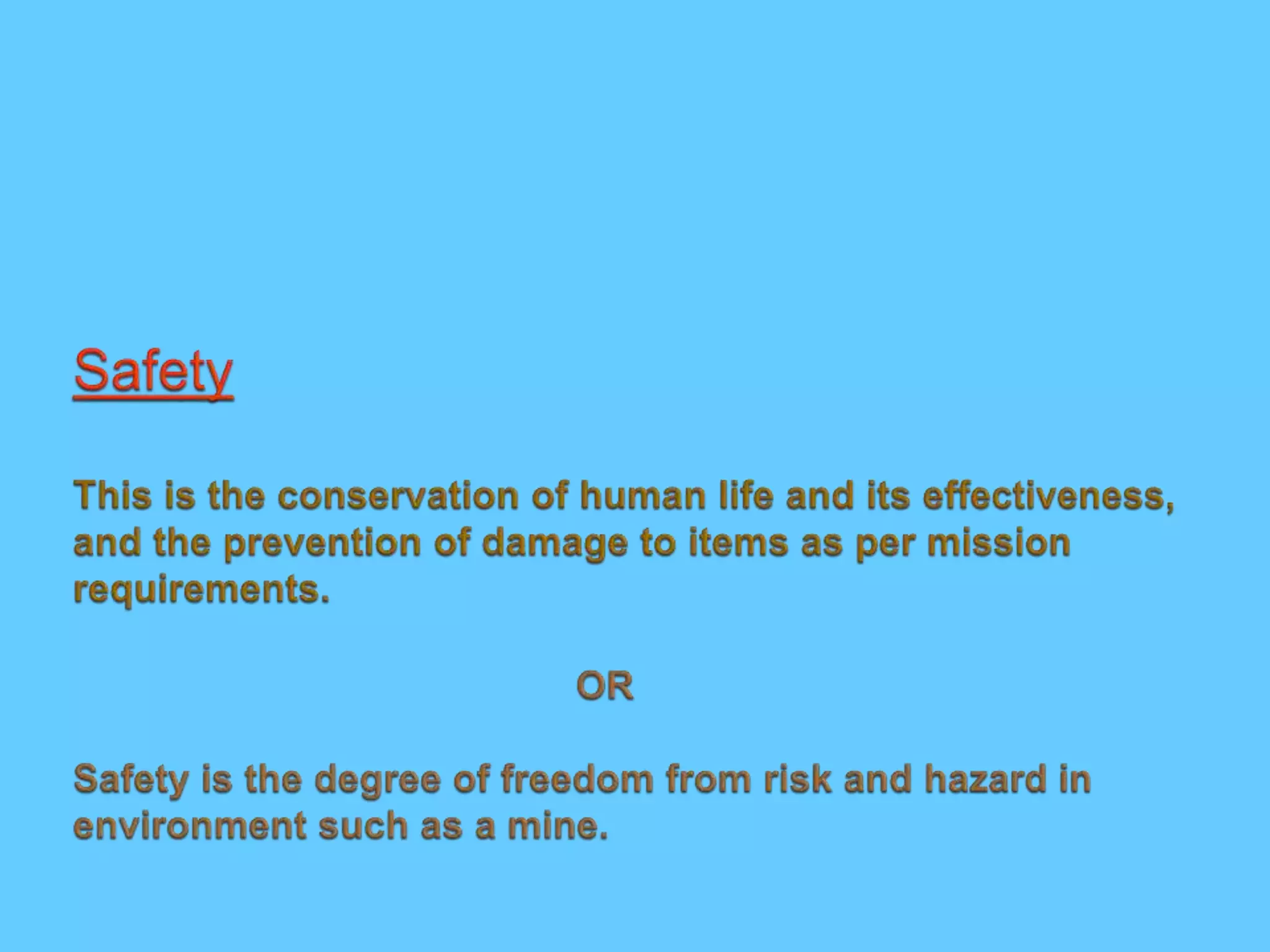- Mining is a hazardous profession with high accident and injury rates in India. There were 117 and 101 fatalities and 509 and 52 serious injuries in coal and metalliferous mines respectively in 2010.
- On average over the last ten years, there were 83 and 49 fatalities and 729 and 94 serious accidents annually in coal and metalliferous mines respectively.
- The average death rate per 1000 persons employed annually is around 0.26 and 0.42 and the serious injury rate is around 1.95 and 0.74 in coal and metalliferous mines respectively.
- Several factors ranging from personal to management issues contribute to the high injury rates in Indian mines.



























































































![Age X 1
Experience X 2
Demographic
1
Work Injury X 3
Work Injury
2
Impulsivity X 4
Negative affectivity X 5
Depression X 6
Risk Taking X 7
Negative Personality
3
Job Stress X 11
Co-Worker Support X 12
Supervisory Support X 13
Management Worker Interaction X
14
Safety Training X8
Safety Practice X 9
Safety equipment Availability
and Maintenance X 10
Safety Environment
4
Job Stress
5
Job Dissatisfaction X 15
Physical Hazards X 16
Production Pressure X17
Safe Work Behavior X 18
Social Support
6
Job Dissatisfaction
7
Work Hazards
8
Safe Work Behavior 9
0.99*
0.82*
1.00
0.70*
0.72*
0.40*
0.78*
0.61*
0.85*
0.70*
1.00
0.48*
0.88*
0.90*
1.00
0.71*
0.65*
1.00
[* indicates 0.01 probability level of significance]
Path Diagram of Measurement Model](https://image.slidesharecdn.com/safetyinmines-191231134817/75/Safety-in-mines-92-2048.jpg)

![Job Dissatisfaction 4
Work Injury
6
Safety Environment 1
Safe Work Behavior
5
Negative Personality
3
Job Stress 2
Work Hazards 1
Social Support
2
Demographic 3
-0.24*
0.69*
-0.39*
-0.65*
-0.06
0.05
-0.02
-0.03
0.38*
-0.25*
-0.37*
0.37*
-0.40*
0.08
-0.01
0.26*
0.29*
-0.14*
0.08*
0.76*
0.87*
0.40*
0.22*
0.37*
[* indicates 0.05 probability level of significance]
Accident Model Path Diagram](https://image.slidesharecdn.com/safetyinmines-191231134817/75/Safety-in-mines-94-2048.jpg)





